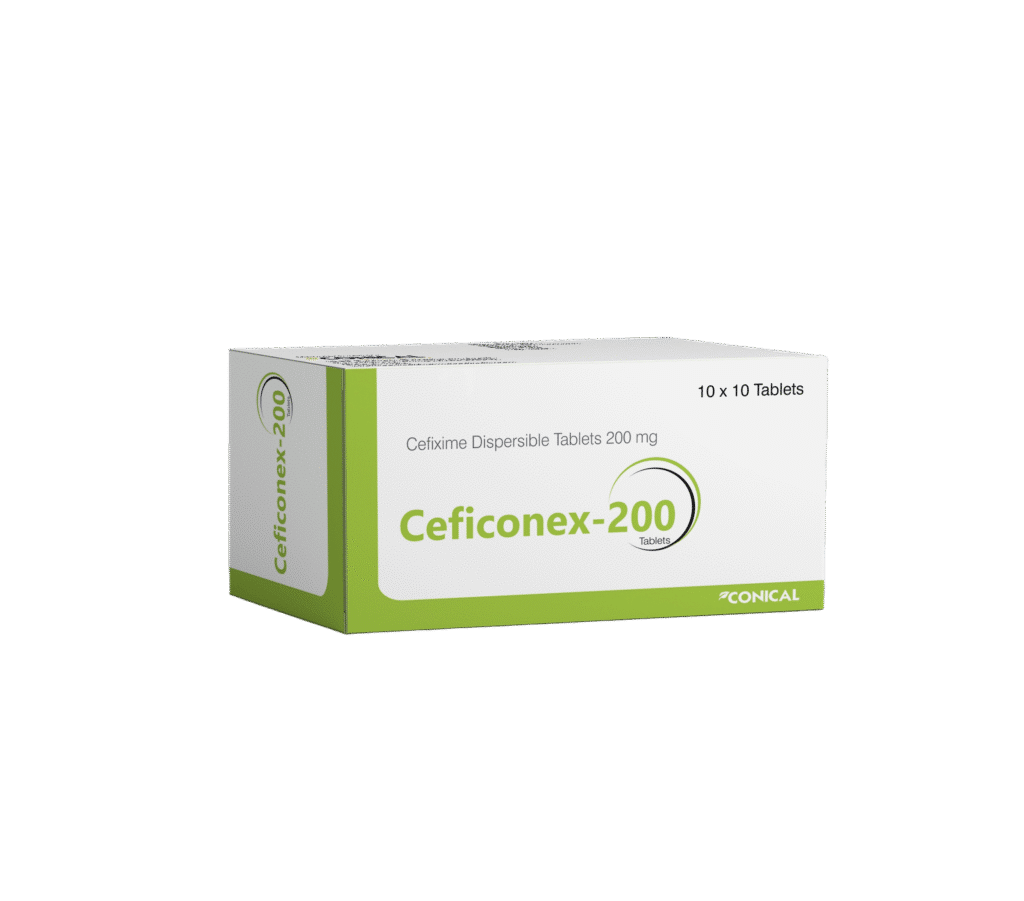







Cefixime 200 mg Tablet is an antibiotic that helps your body fight off infections caused by bacteria.
Doctors often prescribe it for issues like
For patients requiring higher dosage strength or physician‑directed escalation, explore Cefixime 400 mg Tablet:
Severe cutaneous adverse reactions: Severe cutaneous adverse reactions such as toxic epidermal necrolysis, Stevens-Johnson syndrome, and drug rash with eosinophilia and systemic symptoms (DRESS) have been reported in some patients on cefixime. When severe cutaneous adverse reactions occur, cefixime should be discontinued and appropriate therapy and/or measures should be taken.
Hypersensitivity to penicillins: As with other cephalosporins, cefixime should be given with caution to patients with a history of hypersensitivity to penicillin, as there is some evidence of partial cross-allergenicity between the penicillins and cephalosporins.
Hemolytic anemia: Drug-induced hemolytic anemia, including severe cases with a fatal outcome, has been described for cephalosporins (as a class). The recurrence of hemolytic anemia after re-administration of cephalosporins in a patient with a history of cephalosporin- (including cefixime) –associated haemolytic anaemia has also been reported.
Acute renal failure: As with other cephalosporins, cefixime may cause acute renal failure including tubulointerstitial nephritis as an underlying pathological condition. When acute renal failure occurs, cefixime should be discontinued and appropriate therapy and/or measures should be taken.
For oral administration only.
The usual course of treatment is 7 days. This may be continued for up to 14 days if required.
Cefixime 200 mg Tablet is generally well tolerated. The majority of adverse reactions were mild and self-limiting in nature.
The following adverse reaction (preferred term or equivalent) will be considered listed:
Blood and lymphatic system disorders: Eosinophilia, Hypereosinophilia, agranulocytosis, and Leucopenia
Neutropenia, granulocytopenia, hemolytic anemia, thrombocytopenia, and thrombocytosis.
Gastrointestinal: Abdominal pain, diarrhea, dyspepsia, nausea, vomiting, flatulence.
Diarrhea has been more commonly associated with higher doses. Some cases of moderate to severe diarrhea have been reported; this has occasionally warranted cessation of therapy. Cefixime should be discontinued if marked diarrhea occurs.
Hepatobiliary disorders: Jaundice
Infections and infestations: Pseudomembranous colitis
Nervous system disorders: Dizziness, Headache
Respiratory, thoracic and mediastinal disorders: Dyspnoea
Renal and urinary disorders: Acute renal failure, including tubulointerstitial nephritis as an underlying pathological condition.
Immune System disorders, administrative site conditions, skin and subcutaneous tissue disorders: Anaphylactic reaction, Serum sickness-like reaction, Drug rash with eosinophilia and systemic symptoms (DRESS), Pruritus, Rash, Drug Fever, Arthralgia, Erythema multiforme, Stevens-Johnson syndrome, Toxic epidermal necrolysis, Angio-oedema, urticaria, pyrexia, face oedema, genital pruritus, and vaginitis.
Store below 30°C and protect from light and moisture.
Keep the medicine out of reach of children.
Alu-Alu blister pack.
Cefixime 200 mg Tablet is available in an Alu-Alu blister of 10 tablets. Such 10 blisters in a unit carton with a package insert.
Contact us directly to receive full information on the product, the formulation, the science behind it, stability data, and more. Our Business Development Manager is a click away.
Questions are useful tools, they open lines of communication; give us information; improve interactions, facilitate analysis, and many more.
A pharma CMO is a special kind of an organization, offering contract manufacturing services to pharmaceutical companies for various kinds of drug formulations.
Reduce overall costs and time to market :
Contract manufacturers already have the needed infrastructure and technical staff, so working with a CMO or CDMO can decrease the cost of manufacturing your pharmaceutical products.
Scalability and flexible production capacity :
You can produce what you need when you need it without worrying about excess capacity. Additionally, CMOs understand the importance of quality and compliance, so you don't have to sacrifice safety for scalability.
Save on upgrading and maintaining equipment :
If you have your manufacturing facility, you’ll have to pay to upgrade your equipment as technology advances—which can get expensive. A CMO/CDMO’s only function is to make and distribute products, so part of their core business responsibility is to update their equipment whenever needed and perform maintenance.
Ease supply chain issues :
During the pandemic, there were several instances of supply chain issues, including medicine shortages. CMOs are generally better equipped than startups to handle a supply chain crisis.
Bandwidth to focus on core competencies
When your company resources aren’t directly allocated to manufacturing and distribution, you have more time to focus on other tasks, like marketing your new drug, researching, or working on drug discovery.
We have 7+ manufacturing sites with a minimum of WHO GMP certification and other country-specific approvals like NAFDAC approved, PPK Kenya Approved, TFDA Tanzania Approved, EU-GMP Approved.
We have below manufacturing capacity:
For Tablet, Capsule, and soft gel: up to 1 million units per shift
For Syrup: up to 0.05 Million per shift
For Ampoule and Vial: up to 0.1 million units per shift
For Ointment and Cream: up to 0.1 million units per shift
For Suppository: 0.1 Million units per shift
